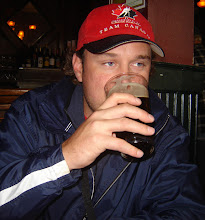Help a fellow enthusiast out! Click on any ad on the right.
You don't have to purchase anything. A simple click is all it takes.
Thank you!
Wanted to share my 1996 Honda Accord F22B2 DIY ITB setup. I have not installed the ITB's yet. I am currently completely restoring and customizing the chassis.
ECU Chipped
I started this whole project off with learning how to chip my own ECU and it was a bit tougher than I thought but I got it done eventually.

My Auto P75 non VTEC Ecu converted to a 5spd P72 VTEC w/IAB enabled, low profile Zif Chipped, with jumpers, to allow for an easy return to the stock auto P75 mode. Base Mapped, set up for Hulog data logging and OBD2 (Veh) to OBD1 (ecu) wired.
GSXR Throttle Body prep for F22 ITB conversion
These are a set of 2003 GSXR 1000 Throttle bodies. Measuring 51mm at the trumpet and 46mm @ the throttle plate. Now some may say that these are the measurements for a Hyabusa, so be it, I got these TB for the price of 1000’s….cheap $80 delivered.
First sep was obviously to clean them up and get rid of all the bits that I will not be using.

They came with the secondary throttle bar still attached but not the the valves. I removed the bar and was faced with the fact that a hole in the side of the ventury would not be a benefit so I filled the holes with JB weld.
Before JB weld

& holes filled

Then I had to go about deciding what to do with the stock GSXR fuel injector locations. They could be of some use in the future so for now I decided to just leave them be. Possible secondary injector setup :thumbup:

I did not make the injector bungs any bigger or modify the seal in any way so that I may be able to add an extra set of injectors in the future. May even try adding the GSXR injectors.
Well after doing this I saw that there was a bit of room to clean up the JB weld and maybe enlarge the ventury.
So I honed them out about 1mm making them 52mm at the trumpet and 47mm at the throat

Then polished them.

on to
The runners and stock F22 manifold.
This is where I started with a stock Upper & Lower IM.

After I disassembled them here is what I had to work with, got to love So Cal car parts not a spot of rust or aluminum pitting.

After a few hours of cutting, grinding and fine-tuning. I get my lower manifold ready for runners.


At this point is where I stood stagnant.....waiting........and......
........waiting. It was a long wait for my custom bent aluminum runners. You wouldn't believe how hard it was to find 1"7/8" I.D. aluminum tubing in this city. It's not a common tube size or material for refineries, paper mills or breweries. lol Not one shop in the city carried this tube size.
After some searching I found some and have made my request for 4 14" pieces w/40°. I want my ITB runners with a bit of an angle.
Here is where it all begins, the hours of fabrication. These are all the parts that went into making my ITB's, Runners, Fuel Rail and Vacuum Manifold.

And.......
here they are with those unbelievable hours of fabricating and grinding to get the angles right as well as the curve. I had to make it so that there would be as little bend in the inside track of the runner as possible. Some may have noticed that the runners I started with were a lot longer...well that's how long I needed them to achieve the curve without being to badly crushed in the bender. The amount that they did flatten matched the oval shape manifold ports 100%. I now have enough pipe to do 1 or 2 more sets depending on the runner length. I only used one and a half of the four.
Fitted with the bottom half of my ram air GSXR air box. All measurements were double and triple checked to ensure this thing will fit snug in the available space.

Finished intake & throttles. I had my runners welded directly to the throttle bodies. The runner length is measured specific to my engines target RPM range and VE%.It will make use of second wave harmonics at this length.
 Vacuum Manifoild
Vacuum Manifoild
Now some people are saying that what do you need a vacuum manifold for ITB's are un-tunable using vacuum. Well not to step on any toes but I need vacuum for more than just my MAP sensor. I need vacuum for my FPR and my break boost. Plus I had some spare tubing lying around and some aluminum end plugs so I did it anyway.
My vacuum manifold is complete will all the factory vacuum line ports as you can see in the pic it is actually the factory vacuum housing from my parts manifold.

And this is how it sits now waiting to have my engine rebuilt and my engine bay cleaned up.
Complete with vacuum can and all stock vacuum line ports.

If ITBs aren't your thing. Why not try a larger throttle body.
































































